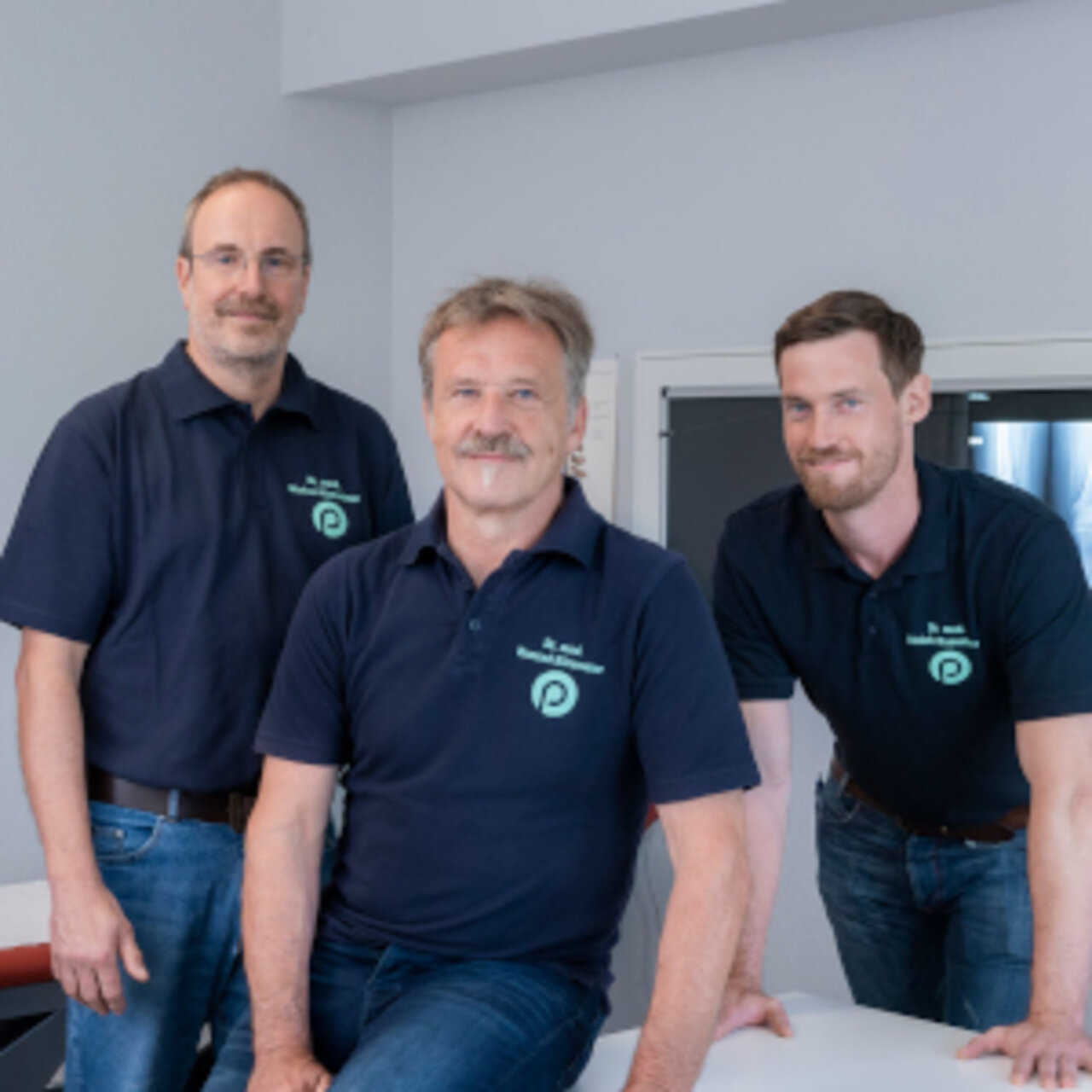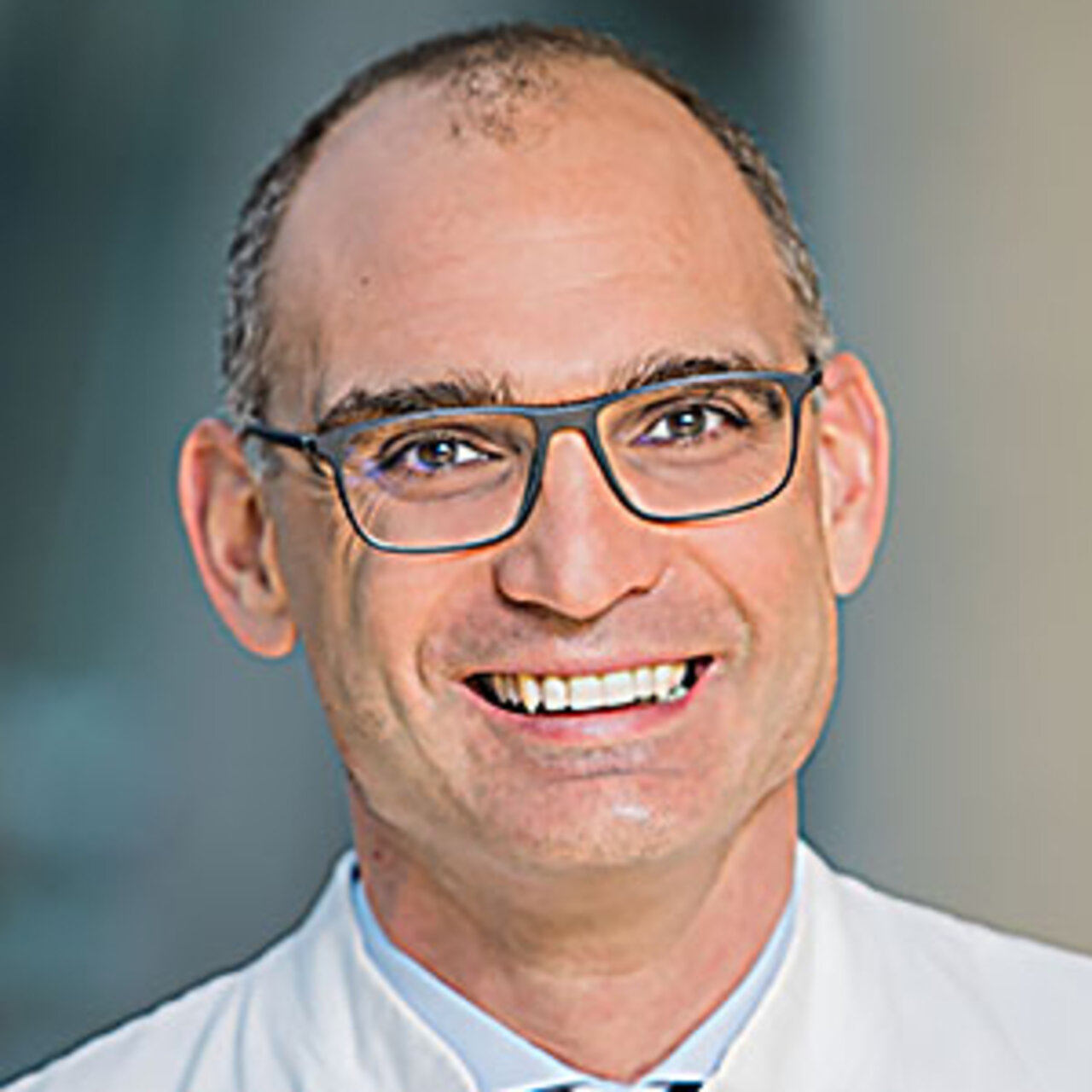Specialists in Shoulder Osteoarthritis
12 Specialists found
Information About the Field of Shoulder Osteoarthritis
What Is Shoulder Osteoarthritis?
Shoulder osteoarthritis is a progressive degeneration of the joint in which the shoulder joint's cartilage and bone are attrited.
The glenoid scapula cavity and the humeral condyle can become chronically worn. If inflammatory changes manifest in a degenerated shoulder joint, it is called activated shoulder osteoarthritis.
Since our shoulder joint is subject to relatively low-pressure loads (compared to the knee joint, for example), shoulder osteoarthritis occurs relatively rarely. In most cases, the exact cause cannot be identified, but metabolic disorders are suspected, especially in older patients, which leads to an imbalance between cartilage formation and cartilage degradation.
Likewise, injuries in daily routine or sports that initially damage the joint and subsequently restrict mobility and stability can lead to the development of osteoarthritis. This is because the shoulder joint is primarily stabilized and moved by a group of muscles (rotator cuff), and a joint lip (labrum) also provides stability to the joint. Damage to the rotator cuff or the labrum results in a loss of joint stability, which harms the joint's cartilage surfaces.
Symptoms of Shoulder Osteoarthritis
Although the shoulder joint's degeneration occurs less frequently than in the lower extremities, an arthritic shoulder can still be very unpleasant and painful for the affected patients, which can also have far-reaching consequences, as mobility often deteriorates enormously. Taking a glass out of the cupboard can already become painful torture for patients. In many patients, the pain also occurs frequently at night, so prolonged pain medication becomes indispensable. Furthermore, patients complain of grinding and creaking noises from the shoulder joint during many movements.
Causes: How Does Shoulder Osteoarthritis Develop?
In addition to familial accumulations of arthrosis, the leading cause is long-term overloading of the shoulder joint. Patients suffering from shoulder osteoarthritis often also have a history of accidents or sports injuries. Risk groups are, for example, patients who work manually and also perform frequent overhead work. In this case, there is an increased load on all structures (muscles, tendons, and ligaments) that participate in stabilizing the joint. Injuries classically occur as a result of, for example, a fall on the shoulder or an incorrect throwing technique. If one or more of the important stabilizing structures (e.g., supraspinatus tendon) is injured, the risk of developing shoulder arthrosis is significantly increased. Particularly in the case of fractures close to the joint, where articular cartilage may also be damaged, shoulder osteoarthritis is likely to occur soon. Due to the reduced stability of the joint or the direct loss of cartilage, a chronic degenerative development then occurs. The inflammation of the joint capsule causes the typical pain and movement restrictions of osteoarthritis.
Diagnostics: How Is Shoulder Osteoarthritis Diagnosed?
The diagnosis of osteoarthritis is made after an immediate anamnesis (questioning) and orthopedic examination. If, in addition to pain and restricted movement, the patient also describes noises when moving (crepitations), the suspicion is confirmed with X-ray findings or CT. The physician pays particular attention to the position of the joint partners in relation to each other and the size of the joint gap. An ultrasound examination or an MRI image can also provide more precise information regarding the condition of the soft tissues (muscles, tendons). This is important because it allows the state of the joint to be assessed much more comprehensively.
What Can Be Done About Shoulder Osteoarthritis?
The earlier you act, the more can be fixed. However, osteoarthritis cannot be cured entirely since degenerated cartilage cannot be 100 percent restored. For this reason, the treatment of shoulder osteoarthritis aims to prevent cartilage wear, and suppress arthrosis that has already progressed, and alleviate pain.
A primary distinction is made between conservative and surgical therapy, but it is often a combination of different approaches that ultimately leads to the best possible success.
Conservative Therapy
Conservative therapy combines various therapeutic approaches to avoid surgery possibly. Targeted range-of-motion exercises are used to restore shoulder mobility and to strengthen and stretch the rotator cuff. As part of physiotherapeutic treatment, the patient is encouraged to carry out specific exercises, which should also be continued independently. Besides, thermal therapy and cryotherapy are often helpful.
Painkillers such as ibuprofen can be administered, which have an anti-inflammatory effect and relieve the pain, making it easier to do the movement exercises. Furthermore, drugs such as hyaluronic acid can be injected directly into the joint to initiate cartilage-building processes.
It is equally important for the patient to prevent the progression of osteoarthritis by avoiding certain activities, such as overhead movements or overloading the joint. The shoulder's prolonged immobilization should also be avoided, and the joint should be regularly exercised and moderately loaded.
Shoulder Osteoarthritis Surgery: For Which Patients Is Shoulder Surgery Advisable?
Surgery is advisable when a patient cannot achieve a satisfactory shoulder osteoarthritis status through conservative therapy such as physical therapy, injections, and pain medication. In the case of an injury, such as a fracture of the humerus close to the joint, age is an additional deciding factor. If surgery is advised for younger patients, it tends to be recommended against in patients over the age of 80 years. But, in some cases, surgery is inevitable.
Which Surgical Methods Are Available?
The number of methods and techniques of shoulder joint surgery has increased considerably in recent years. There is now a suitable surgical method for every degree of osteoarthritis severity. The main distinction is between joint-preserving and joint-replacing procedures:
Arthroscopy
In the early stages of osteoarthritis, small ''repairs'' can be made in a minimally invasive procedure (little soft tissue damage, small scars) with shoulder arthroscopy. The surgeon removes scarred or inflamed tissue, cleans the joint, and can even transplant cartilage. These techniques are used to delay osteoarthritis as long as possible and preserve the joint's anatomy best possible.
Shoulder Prosthesis
Suppose the osteoarthritis in the shoulder joint is not yet very advanced and rather limited to one joint partner (glenoid or head). In that case, a partial joint replacement can contribute to improved function and pain relief. Likewise, bone-saving surgery is performed in this way, in the case of replacing prosthetic material. In a shoulder TEP (total joint replacement), the entire joint is replaced. Depending on the bone and muscle-tendon defects, the surgeon decides whether an anatomical or inverse (joint head and socket inverted) replacement is used.
Which Doctors Are Specialists in Shoulder Osteoarthritis
Patients suffering from shoulder pain or osteoarthritis of the shoulder joint should primarily see an orthopedist focusing on shoulder surgery. Sports medicine specialists or orthopedic rheumatologists are also suitable professionals. If the diagnosis is confirmed and surgery is considered, it is advisable to consult an experienced surgeon in shoulder endo-prosthetics. Patients can find them in private practices, as well as in joint and endo-prosthetics centers.
Sources:
Wirth/Mutschler; Praxis der Orthopädie und Unfallchirurgie. 3. Auflage, 2013, Thieme Verlag.
Prometheus Anatomie, Thieme Verlag
Duale Reihe Orthopädie und Unfallchirurgie
Deutsche Gesellschaft für Unfallchirurgie
Bundesverband für Medizintechnik











